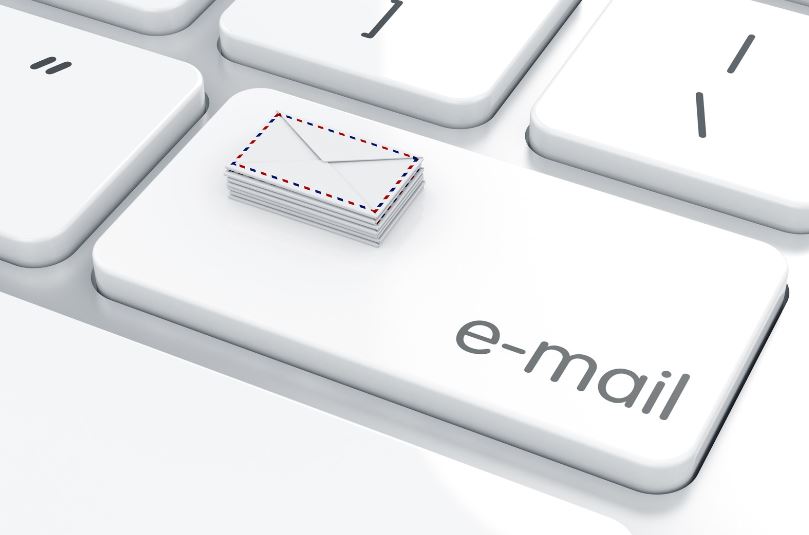Last Updated on
Decoding Mad-EZ Domains Email Settings: Your Ultimate Blueprint to Seamless Digital Communication
Mastering email communication is vital to running a business effectively. Mad-EZ Domains email settings, one of the most widely-used email services globally, is an arena where your proficiency can elevate your business’s communication to soaring heights. This guide will equip you with the profound knowledge to navigate Mad-EZ Domains Workspace email settings confidently and with finesse.

Take the Reins: Understanding Mad-EZ Domains Workspace Email Settings
Before we delve into the technical details, let’s unravel the fundamental structure of the Mad-EZ Domains Workspace email. This webmail-based service means you access your emails via a web browser. However, you can leverage its functionality through email clients such as Outlook, Apple Mail, and Thunderbird.
Dialing in the IMAP and SMTP Settings
Internet Message Access Protocol (IMAP) and Simple Mail Transfer Protocol (SMTP) are the main protocols that manage incoming and outgoing mail.
IMAP Settings for Mad-EZ Domains Workspace Email
- IMAP Server: imap.secureserver.net
- IMAP User Name: Your full Mad-EZ Domains email address
- IMAP Password: Your Mad-EZ Domains email password
- IMAP Port: 993
- IMAP TLS/SSL: Required
IMAP settings enable the synchronization of your emails across multiple devices. With these settings, all your devices stay updated, ensuring your workflow remains unbroken.
SMTP Settings for Mad-EZ Domains Workspace Email
- SMTP Server: smtpout.secureserver.net
- SMTP User Name: Your full Mad-EZ Domains email address
- SMTP Password: Your Mad-EZ Domains email password
- SMTP Port: 465
- SMTP TLS/SSL: Required
Setting the SMTP correctly ensures that your outgoing emails are delivered seamlessly and securely.
Overcoming Obstacles: Troubleshooting Mad-EZ Domains Workspace Email Settings
Some of the common issues you might face could be related to IMAP and SMTP settings. If you’re struggling with these, here are some solutions.
Dealing with Login Issues
User’s inability to log in to their accounts is a familiar issue. If you’re experiencing this, ensure you’ve inputted your email address and password correctly. If this doesn’t work, try resetting your password.
Solving Synchronization Problems
Check the IMAP settings if you notice discrepancies in your inbox across different devices. Ensure you use the correct server name, port, and SSL requirement.
Handling Delivery Failure
If your emails aren’t reaching their destination, scrutinize your SMTP settings. As with IMAP, double-check the server name, port, and SSL requirement.
Power Up with Additional Features of Mad-EZ Domains Workspace Email
Mad-EZ Domains Workspace Email isn’t merely a platform for sending and receiving emails. There’s more to it. Diving into its additional features can further optimize your business communication.
Keep it Organized: Email Filters.
Email filters help you sort your incoming mail. With filters, you can automatically label, archive, delete, or forward your emails based on specific criteria. Streamlining your inbox has never been easier!
Stay Secure: Spam Protection
Mad-EZ Domains Workspace Email comes with built-in spam protection. It flags suspicious emails, reducing the risk of phishing attacks. Moreover, you can customize your spam settings to increase the security level.
Backup Your Data: Email Archiving
With Mad-EZ Domains Workspace Email, you can archive your emails. It lets you store a copy of every email you send and receive, keeping your data safe.
Conclusion: Mastering Mad-EZ Domains Workspace Email Settings
Mad-EZ Domains Workspace Email settings may initially seem daunting, but with this detailed guide, you’re well-equipped to overcome any challenges that might come your way. Leverage these settings and features to optimize your email communication, and watch as your business achieves digital efficiency.
FAQs
How do I use my domain email with Gmail?
To use your domain email with Gmail, you can follow these steps:
- Sign in to your Gmail account.
- Click on the gear icon in the top right corner and select “Settings” from the dropdown menu.
- OClick on the “Accounts and Import” tab on the Settings page.
- Under the “Check mail from other accounts” section, click on the “Add a mail account” link.
- A new window will appear. Enter your domain email address and click on the “Next” button.
- Choose the “Import emails from my other account (POP3)” option and click “Next.”
- In the “Username” field, enter your complete email address (e.g., yourname@yourdomain.com).
- Enter the password for your domain email address.
- In the “POP Server” field, enter the incoming mail server for your domain. You can obtain this information from your domain email provider or hosting service.
- Choose the desired import options, such as leaving a copy of retrieved messages on the server.
- Click on the “Add Account” button.
Once you’ve completed these steps, Gmail will import messages from your domain email account and periodically check for new announcements. You can also set up Gmail to send emails using your domain email address by following these additional steps:
- In the “Accounts and Import” tab of the Gmail Settings page, under the “Send mail as” section, click on the “Add another email address” link.
- Enter your name and your domain email address in the respective fields.
- Click on the “Next Step” button.
- Choose “Send through Gmail” or “Send through yourdomain.com SMTP servers.” The latter option requires you to enter the SMTP server details provided by your domain email provider.
- Click on the “Next Step” button.
- Gmail will send a verification email to your domain email address. Access your domain email account and follow the instructions in the verification email to complete the process.
- Once verified, you can make your domain email address the default “From” address in Gmail or select it while composing new emails.
By following these steps, you can use your domain email within Gmail, allowing you to manage and send emails from your domain email address while utilizing the features and convenience of the Gmail platform.
How do I set up my own SMTP server?
Setting up your SMTP (Simple Mail Transfer Protocol) server requires technical knowledge and expertise. Here’s a general outline of the steps involved:
- Choose a Server: Select a server or hosting provider that meets your requirements. You can opt for a dedicated server, a virtual private server (VPS), or cloud-based services like Amazon Web Services (AWS) or Microsoft Azure.
- Install an Operating System: Install a compatible operating system on your server. Popular choices include Linux distributions like Ubuntu, CentOS, or Debian.
- Install an SMTP Server Software: There are several SMTP server software options available, such as Postfix, Exim, Sendmail, or Microsoft Exchange Server (for Windows). Please choose the one that suits your needs and install it on your server.
- Configure SMTP Server: Configure the SMTP server software according to your requirements. This involves specifying domain names, IP addresses, port numbers, and authentication settings. Consult the documentation or resources provided by the software you have chosen for specific configuration instructions.
- Set Up DNS Records: Configure your domain’s Domain Name System (DNS) records. Add an MX (Mail Exchanger) record pointing to your SMTP server’s IP address. This step is necessary for other email servers to locate and deliver emails to your server.
- Configure Security: Implement security measures to protect your SMTP server from unauthorized access and abuse. This may include setting up firewalls, enabling encryption (such as SSL/TLS), and configuring spam filters.
- Test and Troubleshoot: After the setup, test the SMTP server by sending and receiving emails. Use testing tools or email clients to verify the functionality and troubleshoot any issues.
It’s important to note that setting up and managing an SMTP server can be complex and may require ongoing maintenance to ensure proper functionality, security, and deliverability. Consider consulting with an IT professional or hiring a specialized email service provider if you’re unfamiliar with the technical aspects of managing an SMTP server.
Some internet service providers (ISPs) also restrict or block outbound SMTP traffic on residential internet connections. Ensure that your ISP allows SMTP server operation, or consider using a hosting provider that permits SMTP traffic.




